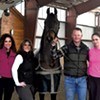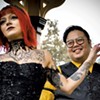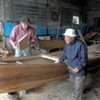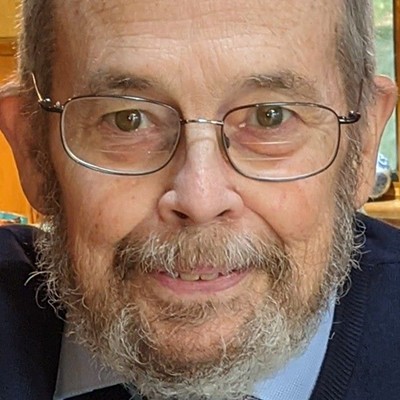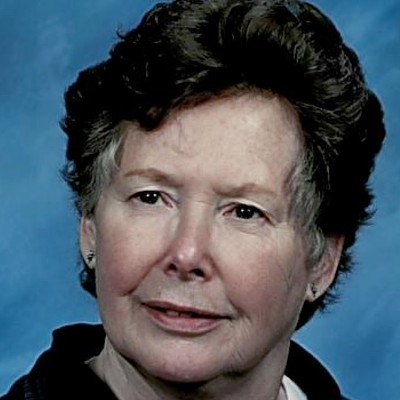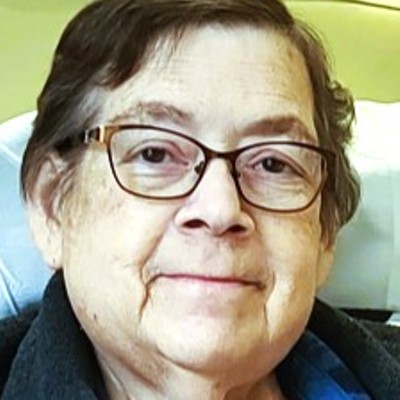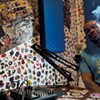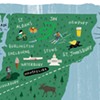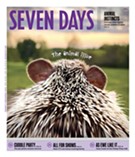click to enlarge 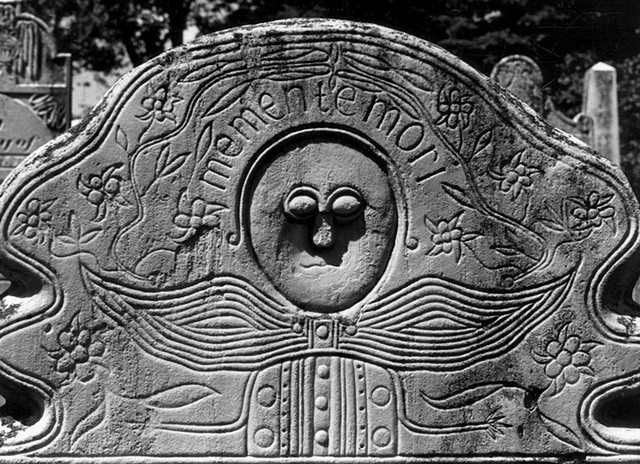
- Courtesy Of American Antiquarian Society
- Constant Barney Jr.'s 1792 gravestone in Arlington
Spend some time poking around old Vermont churchyards and cemeteries — such as those in Arlington, Bennington, Chester, Dorset, Rockingham and Westminster — and you might spot some odd, eerie or downright bizarre imagery etched into the centuries-old gravestones.
Amid the names of the deceased and their dates of birth and death, sometimes you'll also see geometric patterns that appear as though the stonecutter drew them with a protractor: spirals, whorls, daisy wheels and hexafoils.
Other gravestones bear the carvings of hourglasses, coffins within coffins, skulls sprouting wings, and disembodied heads that resemble cartoon characters or bug-eyed extraterrestrials.
Such hieroglyphic-like etchings, which to us seem merely decorative, actually have their roots in Puritan culture, and their meanings would have been instantly understood by New Englanders 300 to 400 years ago. In fact, as Jen Bartlau of the Cambridge Historical Society explained, many of these symbols were once so common that they appeared in primers to teach children their ABCs, with their presence on cemetery stones serving a similar instructional role.
"For about 150 years, this is what you saw on tombstones: a final warning or lesson from the deceased," said Bartlau, 56, who gives presentations at libraries and historical societies about Puritan-era grave symbology. Memento mori, a common Latin phrase etched into many old gravestones, "doesn't mean 'Remember me,'" she added. "It means, 'Remember: You, too, shall die.'"
click to enlarge 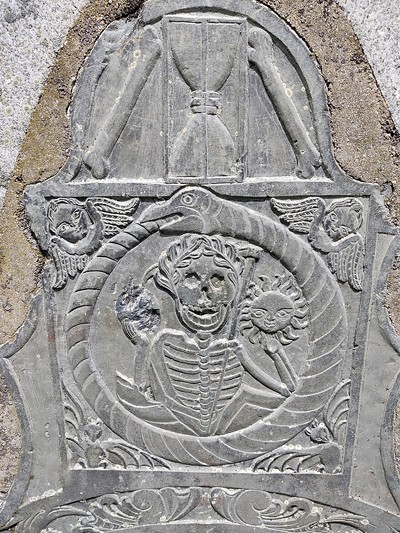
- Courtesy Of Jen Bartlau
- Susanna Jaynes' 1776 gravestone
Bartlau is neither a professional historian nor an expert on Puritan theology. But for more than three decades, she worked as a genealogist, often conducting her research the old-fashioned way: by perusing the headstones of old New England cemeteries. In the past few years, she became curious about the meanings behind many of the symbols she encountered, then sought to understand their historical context. Some have personal significance to her, as they appear on her ancestors' gravestones.
Those whorls, spirals, four-armed crosses, and circles with dots, mesh or webbing? They are what Bartlau calls "apotropaic witch marks" — symbols, markings or "demon traps" that the Puritans believed would ward off evil spirits.
Although the Puritans considered it sinful to practice magic, she said, they hedged their bets, if you will, by using counter-magic to protect themselves and their loved ones. Like the hex charms that the Pennsylvania Dutch hung over barn doors, counter-magic symbols were commonly etched into walls, buried beneath floorboards and carved near wells to keep evil spirits from passing through open passageways.
For the same reason, these symbols, which were engraved on New England gravestones from the 1600s to 1800s, were believed to provide similar defenses for the dead.
"If you think about it, a grave is an opening between heaven and hell," Bartlau said. "So it would protect your loved one's soul from being attacked by evil."
Why were early New Englanders so obsessed with these symbols?
"The Puritans had this idea that salvation was no guarantee," Bartlau continued. "You could go through your whole life and do good works. But if you slipped up somewhere, that might be the one thing that would keep you out of heaven."
click to enlarge 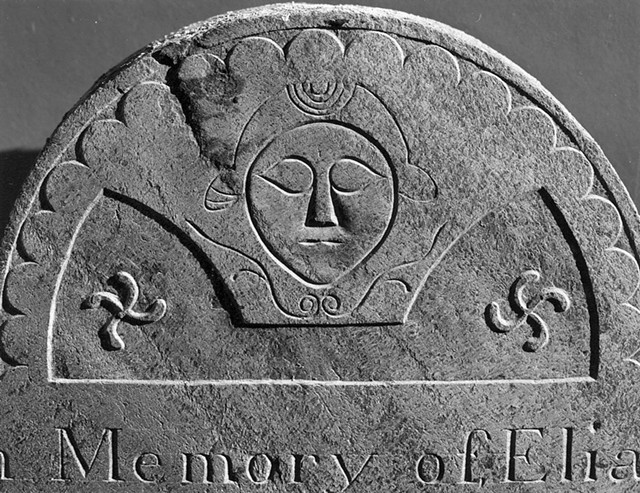
- Courtesy Of American Antiquarian Society
- Eliab Burk's 1804 gravestone in Westminster
Bartlau has a photo of the gravestone of Susanna Jaynes, an 18th-century woman who was interred on Old Burial Hill in Marblehead, Mass., one of the oldest cemeteries in the country.
"It's a very busy stone," she said, "with tons of symbolism."
On it, death appears as a skeleton with a crown of laurels and holding a scythe. There's the moon and sun, cherubs and vampire bats, the latter of which were symbols of hell. There's also an hourglass, which represents that time has run out, and an Ouroboros, or serpent eating its own tail, a symbol of eternity.
Other common symbols of mortality included wheat, which represented a life being cut down; fallen leaves, which portrayed the cycle of life; and a candle being snuffed out.
"The Puritans would recognize these symbols immediately," Bartlau said.
Over time, some of these symbols' meanings evolved. In earlier years, skulls might have personified death, but later they came to represent the deceased's soul taking flight toward heaven. Disembodied skulls sprouting wings are known as "soul effigies," "death heads" or "winged faces." In fact, when I met Bartlau, she bore a henna tattoo of one on her forearms; another death head decal decorates her laptop.
By the 1800s, Bartlau said, New Englanders' fear and uncertainty about unrealized salvation gave way to more hopeful attitudes about the afterlife, which was reflected in a more optimistic symbology of angels and ascension.
click to enlarge 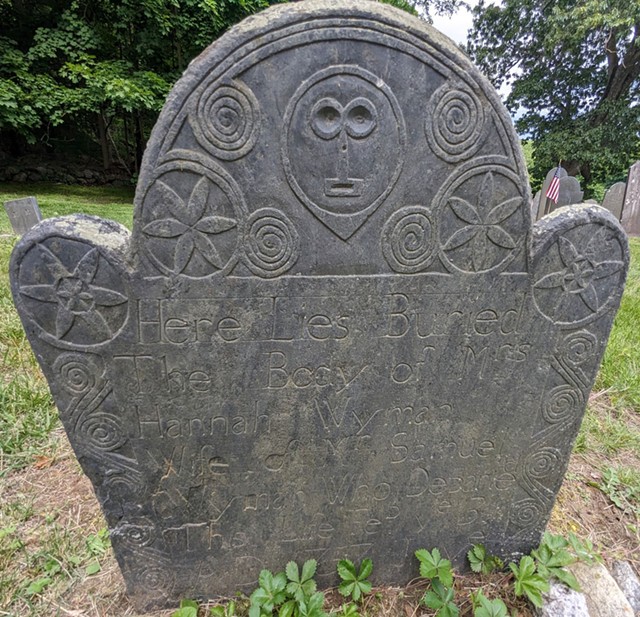
- Courtesy Of Jen Bartlau
- Hannah Wyman's 1757 gravestone
Not all such symbols were practical, such as demon traps, or metaphorical, like the hourglass or skeleton wielding a scythe. Others were representations of the deceased themselves, such as one gravestone that features a coffin within a coffin. This carving indicates that the grave belongs to a woman who died during childbirth with her baby still in her womb.
Bartlau's interest in cemeteries and genealogy began at age 12, when her paternal grandmother gave her the family's pedigree chart, which dates her family's presence in Vermont to 1783. As a child, she often joined her mother and grandmother when they regularly tended their family's burial plot in Woodstock, a practice Bartlau has continued to this day. Bartlau is descended from Pilgrims, including Mary Estey, who was accused of witchcraft during the Salem witch trials, then hanged, as was her sister Rebecca Nurse before her, in 1692.
Despite her family's dark past, Bartlau maintains a lighthearted approach to her study of death and the Puritan symbology that surrounds it. As she pointed out, some of the stonecutters' engravings are rudimentary, even hilarious. There's one Robert Crumb-like creation, on an Arlington gravestone from 1792, that has bug eyes, a crooked nose, a winged bow tie and stick-figure arms. Another, in a Hartford, Conn., crypt, is supposed to resemble a dragon but looks more like a kindergartner's drawing on a refrigerator.
Bartlau has also found soul effigies that look like Charlie Brown and the Cookie Monster, as well as one whose nose bears a striking resemblance to a scrotum.
As she put it, "Death is heavy ... but sometimes it's OK to laugh in its presence."












































